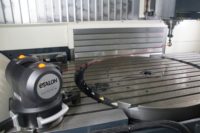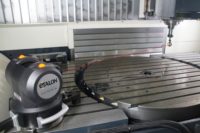
A pinpoint pattern find tool can be used to solve challenging part location, inspection and identification applications. Source: PPT Vision
Today’s machine vision software allows vision systems to solve more complex and demanding applications. In fact, some smart camera software features more than 120 vision tools and algorithms for building powerful custom inspections, guidance and identification solutions. However, these new capabilities often come with their share of initial setup and maintenance complexity.
However, these new capabilities often come with their share of initial setup and maintenance complexity.
Further, many vision equipment manufacturers have multiple software platforms across their product lines, making programming various systems difficult-particularly when application scope changes demand choosing a different camera model.
To solve current applications and future-proof a manufacturing enterprise, it behooves engineers to select a vision system with the necessary capabilities, as well as a universal software suite that operates the same on all smart camera models.
New Vision Tools
With improvements to image processing technology, the quality and quantity of vision algorithms available to process and analyze captured images is greater than ever before. Applications engineers can use a software system’s comprehensive toolset to deliver flexible, custom solutions for solving complex manufacturing inspection challenges. Two tools available in advanced software sets that can prove useful for many applications are advanced pattern find and optical character recognition (OCR) tools.The advanced pattern find tools provide a solution for variably positioned part location, inspection and identification challenges. From robotic guidance to high-speed inspection of randomly orientated, scaled and located parts-with subpixel accuracy-a powerful pattern find tool elegantly solves hundreds of challenging vision applications.
Machine vision systems commonly use a series of edge or binary large object (BLOB) algorithms to locate and inspect parts. By comparison, advanced pattern find tools use the edge information from an object to locate the part. These advanced pattern find tools deliver increased simplicity with the power of using a single tool to adjust for variable location, rotation and reflectivity.
Another advanced vision tool is OCR. While OCR technology is not new, it can now allow for easier setup along with expanded capabilities, making it more accessible for reading and verifying text for applications such as automotive, medical and plastics.
OCR tools find character pattern matches from a library of taught characters, while optical character verification (OCV) tools confirm the presence of desired characters in a specific location. The OCR tool can then compare text with transmitted strings from industrial Ethernet protocol sources and transmit decoded ASCII text strings over RS-232, TCP/IP Ethernet, and Ethernet/IP or Modbus TCP/IP industrial Ethernet protocols.
With an advanced OCR tool, today’s smart cameras may reliably read difficult dot-matrix printing, a challenge often encountered with label inspection, bottle inspection and package inspection. Dot-matrix codes, while less expensive to print, also are less repeatable because of character-to-character variation.
OCR tools are fast-reading text strings as quickly as 1 millisecond per character, requiring only 10 milliseconds for a normal 10-character lot/date code. This ability makes OCR suitable for many high-speed inspection applications.

The latest vision systems allow up to four cameras to be connected to a single controller, enabling that controller to process and perform multiple inspections. Source: PPT Vision
Universal Software with Simple Setup
Today, software offerings are available to make all inspection, guidance and identification programs universally operational on all of a manufacturer’s vision system and smart camera models. Since the identical software suite is used with all the manufacturers’ cameras, operators can transport any inspection program between the differing models. This arrangement saves time and resources because operators trained on the software suite can use it for all applications in the plant.Additionally, intuitive programming features lessen the amount of training required to set up and deploy machine vision applications. Engineers can design custom inspections-utilizing a pinpoint pattern find tool, OCR tool and many additional tools to handle any measurement, surface flaw, guidance, logic or communication task. One of the first questions an engineer should ask when deploying a vision system or vision sensor is, “Who will be maintaining this system?”
If the answer is people within a company’s enterprise, then it may be best to consider an easy-to-use graphical programming. A vision program manager (VPM) may feature an intuitive library of icons and straightforward drag-and-drop tree programming, with no knowledge of programming languages or syntax required. An offline emulator allows operators to create and test inspection programs on any PC without a camera connected.
Most machine vision operators require a human-machine interface at or near the inspection point on the assembly line. However, a control program manager (CPM), a PC-based rapid application development environment, also can be used for these types of applications. It displays visual images from the cameras and helps make plant operators and management more productive and efficient.
CPMs may come with more than 60 fully configurable controls, allowing operators to create custom, professional control panels with multiple image displays, data charts, real-time inspection results with password-protected panels, frames and tabs. Drag-and-drop linking provides easy CPM setup from a VPM program and snap-to-grid allows for fast and easy graphical alignment.
The Future of Industrial Machine Vision Software
New, advanced tools, along with universal software designed for simple setup and operation, allows for a broad range of customized machine vision solutions today, along with future-proof development as processor speed, communications and operating systems are continually updated. This saves significant expense and engineering time, while also saving significant investments in new software and hardware.Future developments in machine vision hardware and software likely will be focused around these same goals: simpler programming and a better communication package designed to deliver inspection information so it strengthens production quality and throughput.
For instance, the latest vision systems allow up to four cameras to be connected to a single controller, enabling that controller to process and perform multiple inspections. The newest systems allow the camera inspection points to be triggered asynchronously, with cameras placed far apart from each other, allowing detailed inspections to be performed on one or multiple independent vision processes in multiple segments of a production line.
A variety of parameters can be inspected with a single system, including dimensions, implied coplanarity-two-dimensional (2-D) cameras with structured lighting-positioning and identification markings-both human readable text labels and barcodes. These systems also can simplify the inspection process when differentiating parts, locating defects and detecting flaws on four sides of a part. This arrangement saves significant expense and time because operators can replace up to four smart cameras with a single vision system.
Programming can be created for four inspections with a single interface, and an advanced software system can be used to make programming intuitive and fast. In addition, since the software is universal, the inspection and guidance program is operational on other camera platforms if a change is made in the future to better suit the application.V&S

